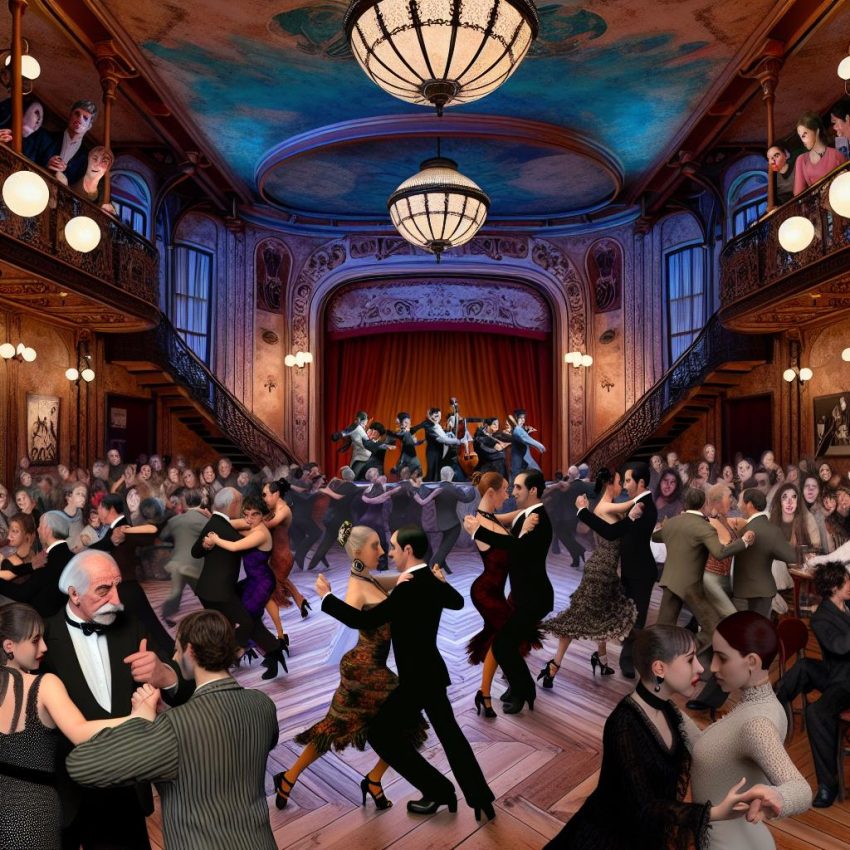Tango Shows in Buenos Aires
Buenos Aires, often referred to as the “Paris of South America”, is renowned not only for its rich cultural heritage but also as the birthplace of tango. This dance form is an integral part of the city’s identity, and numerous venues in Buenos Aires offer captivating tango shows, reflecting both traditional and modern interpretations.
The Historical Roots of Tango
Tango originated in the late 19th century in the working-class neighborhoods of Buenos Aires and Montevideo, blending influences from African, Indigenous, and European cultures. Initially expressed in the crowded bars and dance halls of these neighborhoods, tango quickly gained popularity and evolved from a dance of the underclass to an internationally recognized art form. Its development was marked by a confluence of different musical styles, including the Spanish-Cuban habanera, African candombe, and the Italian folk music brought by immigrants. Tango lyrics often told stories of lost loves, struggles, and the life of the urban poor, revealing the unique socio-cultural tapestry of its origins.
The dance itself is characterized by its passionate and often melancholic undertones, embodying the complex emotions of longing and nostalgia, known in Spanish as “saudade.” As tango grew in sophistication, it spread rapidly across Europe and North America in the early 20th century, being celebrated in the elite ballrooms of Paris, London, and New York, which further contributed to its global appeal.
Popular Tango Venues
Buenos Aires hosts a variety of venues where visitors can experience authentic tango performances. These venues range from intimate settings with historical charm to modern establishments offering gourmet dining experiences. Visitors can choose venues that offer either a comprehensive cultural package, including dinner, dance lessons, and the show itself, or those that focus solely on the performance.
El Viejo Almacén
El Viejo Almacén is one of the oldest and most traditional tango venues in Buenos Aires. Located in the historic San Telmo district, it provides an atmospheric setting that dates back to 1969. The venue hones a rustic charm that enhances the authenticity of its performances. Guests can enjoy a dinner show that features a mix of tango music and dance, highlighting the genre’s evolution over time. The rustic interiors, combined with the lively performances, create an immersive experience, transporting audiences back to the early days of tango in Buenos Aires.
Café de los Angelitos
Sitting at the intersection of modern comfort and historical charm, Café de los Angelitos offers a refined atmosphere. Known for its luxurious interiors, the venue invites patrons to experience tango in an ambiance of elegance and sophistication. The attention to detail in both décor and performance combines to elevate the experience, making it memorable for visitors. Tangible elements like stained glass windows and antique furnishings play a significant role in conveying the historical legacy of tango within this contemporary setting. For more information on booking, visit their official website.
Faena Hotel’s Rojo Tango
For those seeking a more lavish experience, the Rojo Tango show at Faena Hotel is an excellent option. This intimate venue limits the number of attendees, ensuring a more personal interaction with the performers. Each performance is carefully curated to blend traditional tango with contemporary elements, creating a visual and auditory delight for the audience. The combination of innovative choreography, thematic costumes, and a compelling narrative make the Rojo Tango at Faena Hotel a unique experience. It offers an exclusive feel, attracting guests seeking both top-notch entertainment and elegance in a setting that marries the rich tradition of tango with modern flair.
Experiencing Tango in Buenos Aires
Attending a tango show in Buenos Aires offers more than just a night of entertainment; it provides insights into the cultural and historical tapestry of Argentina. Tango shows often feature live orchestras comprised of skilled musicians, along with exceptional vocalists and dancers who bring the stage to life. The performances are a testament to the dedication and passion that artists have for this iconic Argentine tradition. These shows illustrate tango not just as a dance but as a narrative form, expressing a depth of emotion through movements that are both precise and expressive. To fully enjoy this experience, visitors are encouraged to book tickets in advance, especially for popular shows, to ensure availability.
Additional Activities
Beyond the tango shows themselves, many venues offer dance lessons, providing visitors with the opportunity to engage with the dance form personally. These lessons cater to all levels of expertise, from beginners to seasoned enthusiasts, offering tailored experiences that aim to deepen one’s appreciation of tango. Participants can learn classic tango steps, understand the roles of lead and follow, and gain insights into the subtleties of body language that tango dancing requires.
For those interested in exploring further, numerous tango festivals and events occur throughout the year in Buenos Aires. Such festivals provide a platform for local and international artists to showcase their talent, inviting visitors to immerse deeper into the vibrant tango community. Participating in these events can enhance understanding and appreciation of tango’s profound influence on the city’s culture and its continued evolution.
Whether drawn by its historical significance or its artistic expression, experiencing a tango show in Buenos Aires is a must for anyone visiting the city. As an embodiment of Argentine culture, tango continues to captivate audiences, preserving its traditional roots while embracing new interpretations. The blend of Argentine folklore, poetic storytelling, and rich musicality embodied in tango offers a multifaceted cultural experience that resonates with locals and tourists alike. For those exploring the heart of Buenos Aires, attending a tango show offers an invaluable glimpse into the soul of the city, a lively expression of its history and cultural dynamism.

